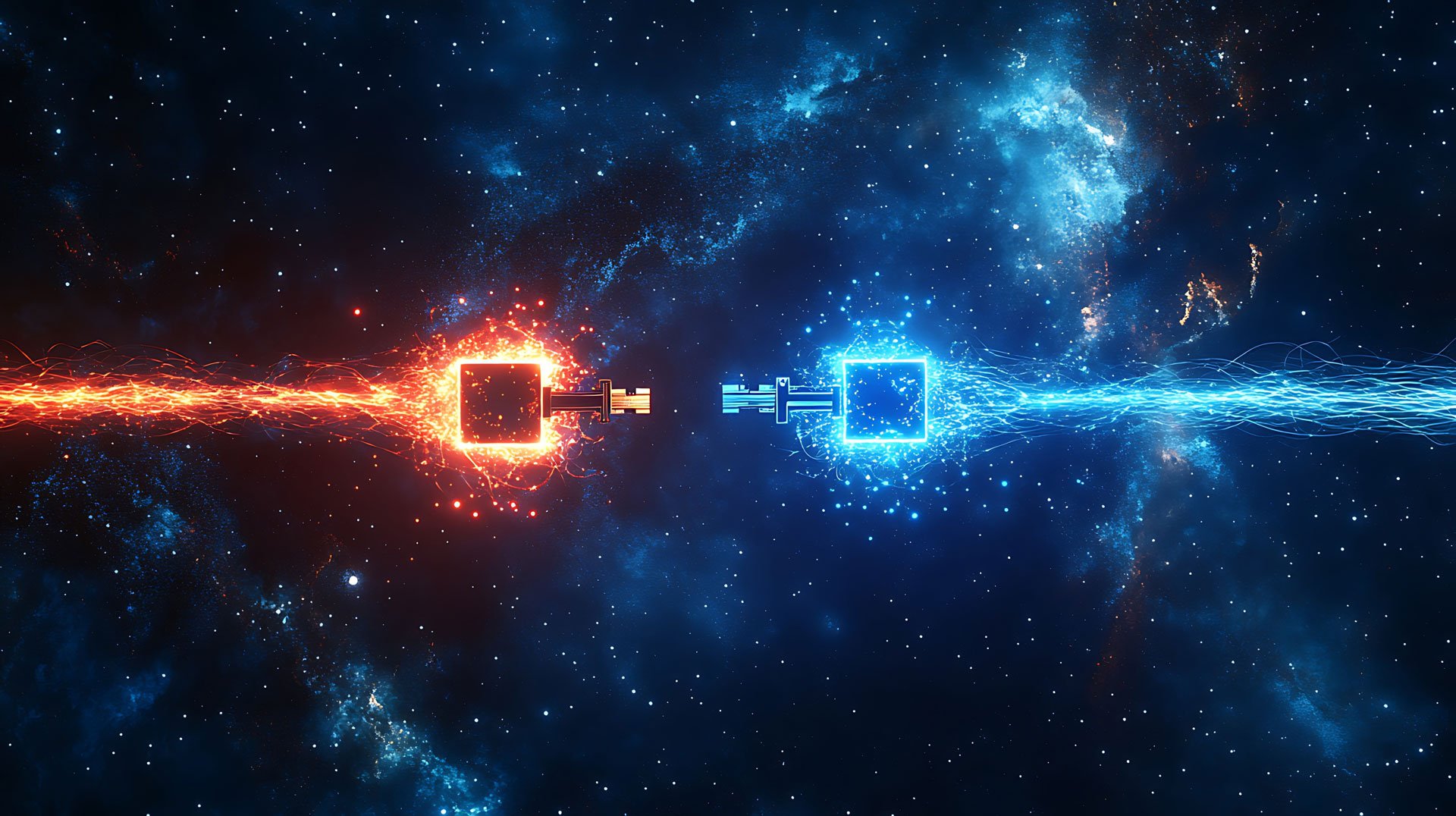Using Quantum to Safeguard Against Quantum
Published June 11 2025
By Dr. Andrew Lance & Aliesha Aden
Protecting sensitive information, from medical records to state secrets, is more critical than ever. But as technology advances, so do the tools of bad actors, including criminals and foreign adversaries.
One major threat? Quantum Computers.
How We Protect Data Today
Most of our digital information on our phones and computers is protected by encryption, whether you realise it or not. For example:
WhatsApp uses ‘end-to-end' encryption, so only you and the person you message can read your chats.
The little lock icon in your browser shows that a website is encrypting your connection.
Encryption scrambles information so that only someone with the right key can unscramble it.
The Quantum Computer Threat
Today’s encryption is strong, but not unbreakable. Many common encryption methods rely on math problems that are very hard for ordinary computers to solve. But powerful quantum computers could one day crack these problems, which put sensitive information at risk.
In other words: quantum computers could break the encryption we rely on today.
Meet Alice, Bob, and Eve
To help explain how secure communication works, let’s introduce three characters:
Alice wants to send a message.
Bob is the person she’s sending it to.
Eve is an eavesdropper trying to intercept it.
In classical encryption, Alice scrambles her message into cyphertext. Bob can unlock it using a private key. Even if Eve intercepts the message, she can’t read it. But today’s encryption depends on certain math problems staying hard to solve. These are math problems that quantum computers could eventually crack.
That’s where Quantum Key Distribution offers a new and better way forward.
Quantum to the Rescue!
Fortunately, quantum technology can also help defend ourselves against this quantum threat. One method is called Quantum Key Distribution (QKD).
QKD allows two people (Alice and Bob) to create a shared secret encryption key that cannot be broken, even by a quantum computer. With this shared key, they can then securely encrypt their communications.
How Quantum Key Distribution Works?
Here’s how QKD allows Alice and Bob to create their shared key:
Alice generates fragile quantum states of light. These packets of light are called photons.
She encodes random bits (ones and zeros) onto the photons.
She transmits these photons to Bob over an optical channel (like free space or optical fibre).
Bob receives the photons and measures their properties using sensitive detectors.
At this point, both Alice and Bob have a record of the bits they sent and received. But they need to check whether the transmission was secure.
Alice and bob compare a small sample of their data using a normal communication channel. If they detect too many errors, they know someone (like Eve) may have tried to intercept the transmission, so they discard the data and try again.
If the transmission was secure, they use the remaining data to create a shared secret key, known only to them.
The QKD process can be thought of in two simple steps, shown below:
Step 1: Alice and Bob create a shared key using fragile quantum signals. Even if Eve has a quantum computer, any attempt to intercept it is detected and discarded.
Step 2: Once the secret key is created, Alice and Bob use it to encrypt their communications, ensuring data security, even in a quantum world
Using the Secret Key
With their shared secret key, Alice and Bob can now encrypt their communications. For example, they might use a one-time pad encryption method, which is theoretically unbreakable when combined with a truly random key like the one QKD provides.
In this way, QKD provides a powerful tool for ensuring data security even in a world where quantum computers exist.
The Future of Secure Communication
Quantum Key Distribution marks a new way to protect information, not by relying on the difficulty of certain maths problems, but by harnessing the laws of physics.
TeraNet is ready for this future. All our optical ground stations are quantum-secure communication ready, with our rapidly deployable, Jeep-based ground terminal (TN-3) being awarded funding from the Defence Science and Technology Group (DSTG) to be upgraded for quantum signal transmission. Safeguarding data today and well into the future.



